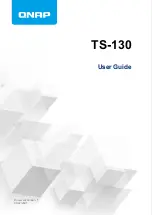
12 - Mounting an SMA-Type External Antenna
RocketLinx WR7802-XT Series User Guide
: 2000638 Rev. A
Hardware Installation
The antennas meet these specifications.
The antennas are easy to connect, simply align the antenna on the connector and turn the antenna clockwise
to lock it into place.
Note:
To remove the antenna, turn it counter-clockwise.
If you are installing the WR7802-XT in a high vibration environment, you may want to connect it with an
extended radio cable antenna.
If installing the WR7802-XT in a weatherproof cabinet to protect it from water, rain or other reasons, we
recommend mounting its antennas outside the cabinet.
Mounting an SMA-Type External Antenna
If the default antenna is not suitable for your environment, you can purchase an external antenna for your
environment. When selecting an SMA-type external antenna, you must choose an antenna that supports the
correct band in your country for radio transmission.
Mounting an N-Type External Antenna
If the default antenna is not suitable for your environment, for example an outdoor area, you can purchase an
external water-proof N-Type antenna. When selecting an N-type external antenna, you must choose the
correct frequency band of the antenna and it must conform to the radio band you connected.
The WR7802-XT requires an N-Type external antenna, which is an SMA to N-Type connector or RF cable.
Remember that the WR7802-XT antenna connector is an RP-SMA female that connects to RP-SMA male
cable.
How to Select an External Antenna
Normally, the antenna that is shipped with the WR7802-XT works well in most indoor applications. If you
need to install the WR7802-XT in a low signal environment and want to install an external antenna, consult
with your system integrator to choose a suitable external antenna. Remember you will need an SMA-type or
N-Type connector for your application. Different antennas support different bands, polarization and different
ranges of coverage.
Keep the following in mind when selecting an external antenna:
•
Gain: Affects the system performance.
•
Direction: Typical types include: Omni-Directional or Directional antenna. Check the antenna zone in its
specification.
Frequency Range
824 - 894MHz
900 - 960MHz
1710 - 1880MHz
1910 - 2170MHz
Peak Gain
1.5dBi
1.0dBi
2.0dBi
4.0dBi
Average Gain
-2.5dBi
-3.5dBi
-2.5dBi
-2.0dBi
Voltage Standing
Wave Ratio (VSWR)
4.0: 1 maximum
Polarization
Linear, vertical
Impedance
50
Ω
Connector
RP SMA plug (Reverse-Polarity Sub Miniature version A)
Beta
Version















































